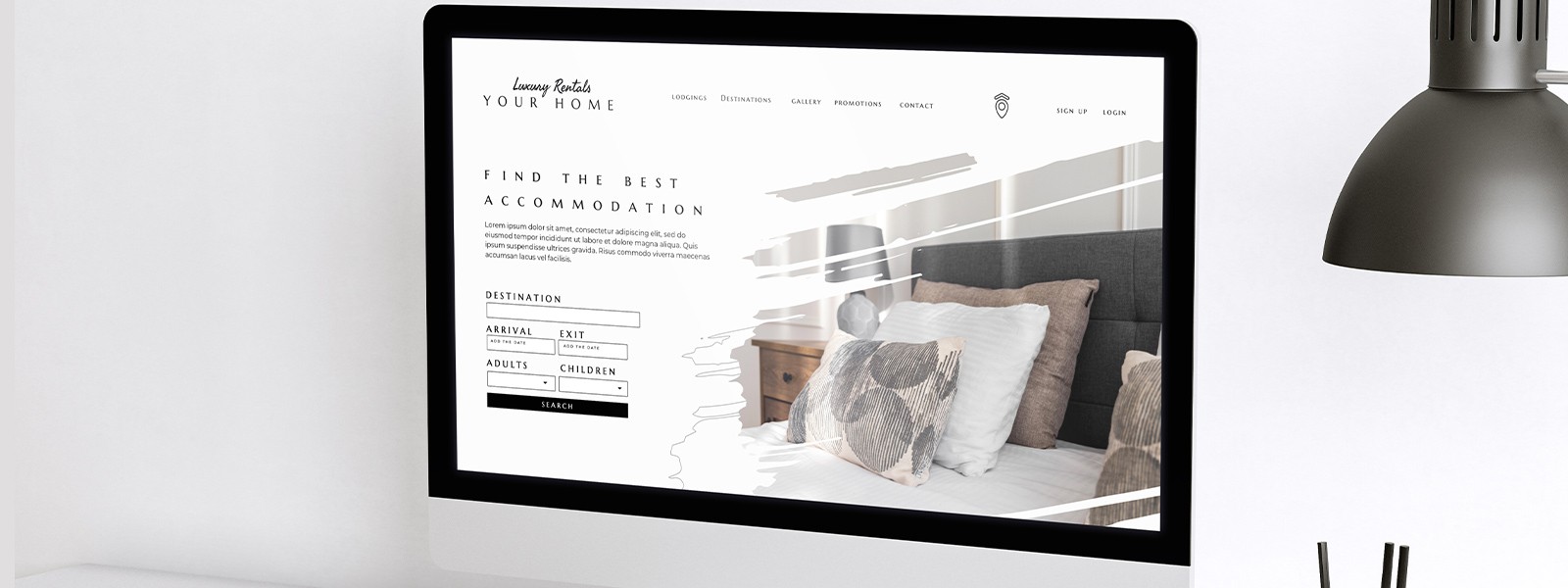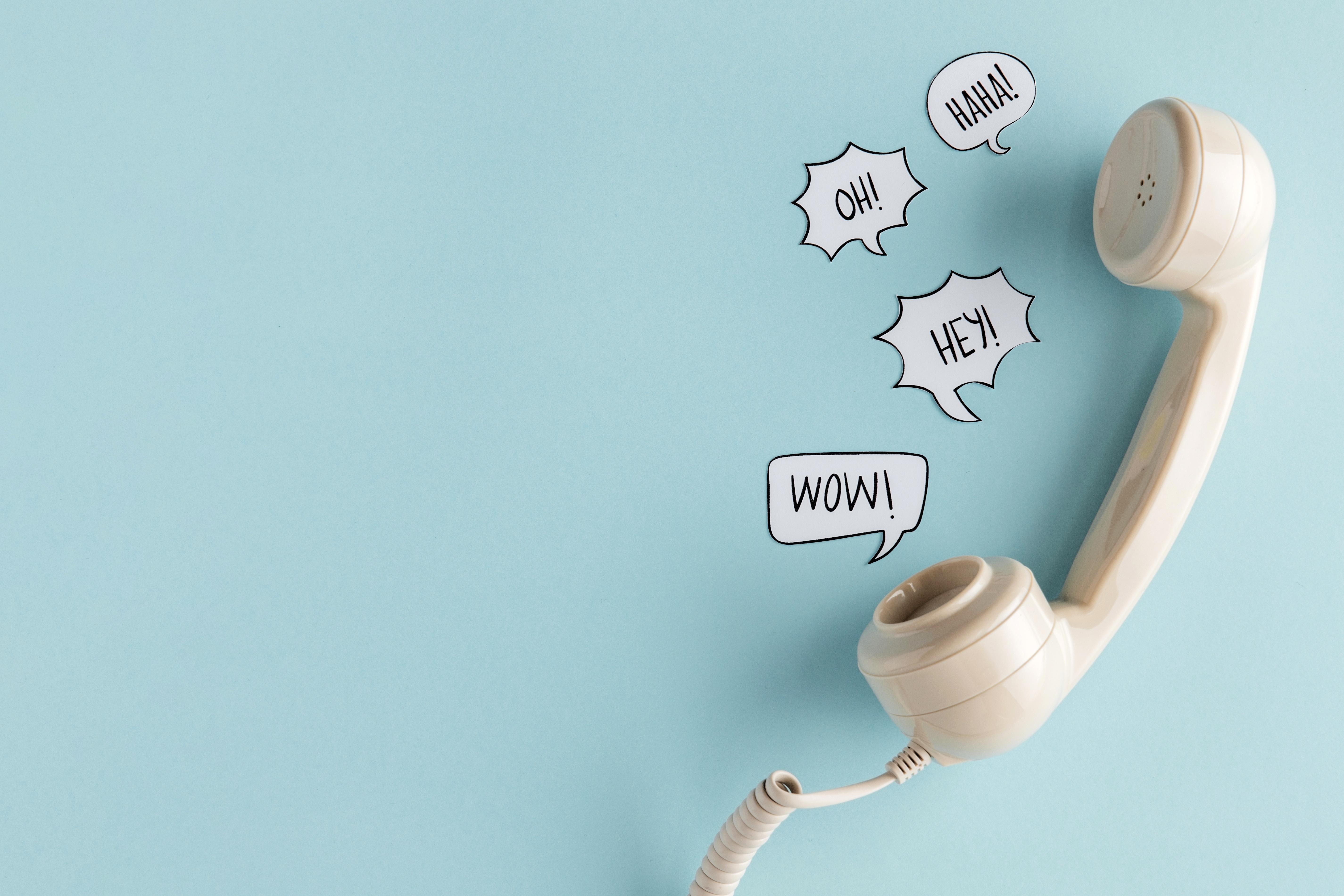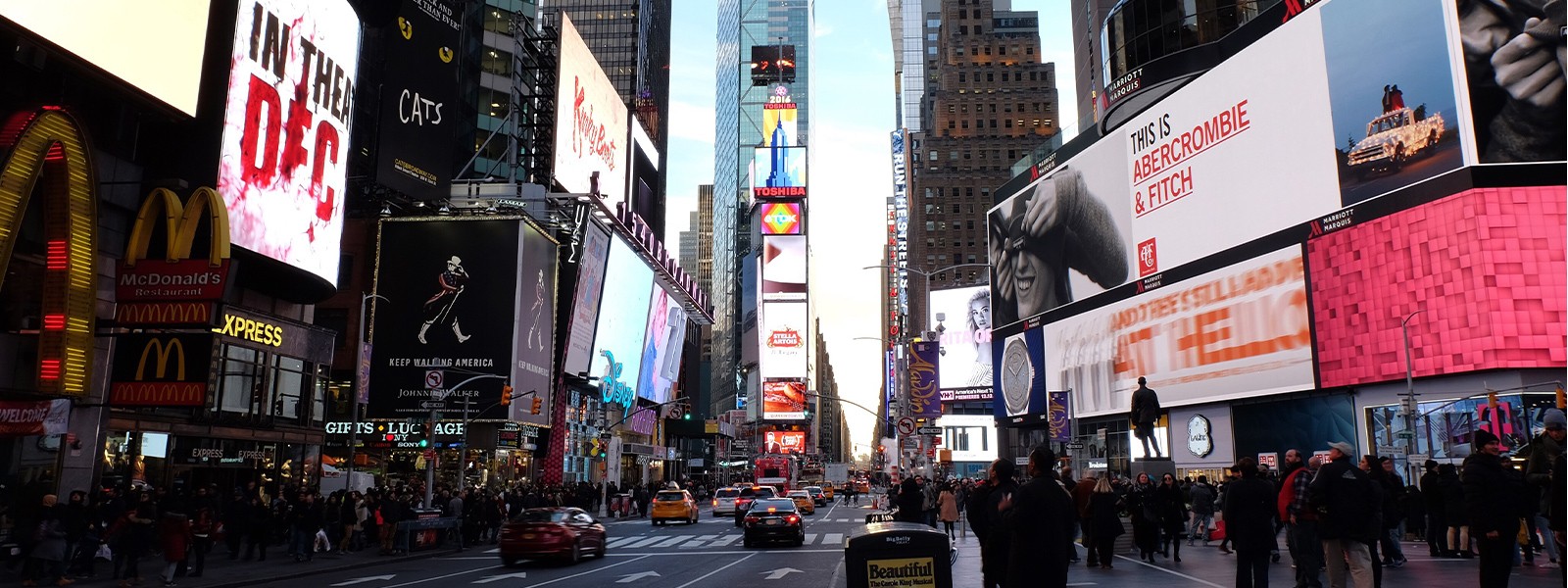Online Ads
/
Taze Creative
Web design in e-commerce is more than just aesthetics. It plays a pivotal role in creating a seamless user experience, building trust, and driving sales. A successful e-commerce website balances form and function, ensuring that users can easily navigate the site while being impressed by its visual appeal.
Here are some key reasons why web design is crucial for your e-commerce site:
First impressions matter: Your website is often the first interaction potential customers have with your brand. A professional, well-organized site creates a positive first impression and encourages visitors to explore further.
Usability and navigation: An intuitive layout makes it easy for customers to find products and information, reducing bounce rates and increasing the chances of a purchase.
Building trust: A clean, modern design with clear calls to action (CTAs) and secure payment options helps build trust with customers. Trust is essential in e-commerce, where users must feel confident in providing their payment information.
SEO benefits: Good web design can improve your site's search engine optimization (SEO), making it easier for customers to find your store through search engines. A well-optimized website ranks higher in search results, driving more organic traffic.
To create a successful e-commerce website, focus on these essential design elements to enhance the user experience, increase engagement, and drive sales:
1. Simple and clean layout
A cluttered website can overwhelm visitors and drive them away. A simple, clean layout ensures that your products and key messages stand out. Prioritize an intuitive design where users can easily find what they are looking for without distractions. Utilize plenty of white space to give your site a modern, polished look and help users focus on core areas such as product listings, calls to action, and promotions.
2. Mobile responsiveness
With a significant portion of shoppers using mobile devices, a mobile-responsive design is essential. Your website must look and perform seamlessly on all devices, whether it’s a smartphone, tablet, or desktop. A mobile-friendly design improves the shopping experience, leading to increased sales, while also boosting SEO rankings since search engines favor mobile-optimized sites.
3. High-quality images and videos
In e-commerce, visual content is crucial. High-quality product images and videos give customers a clearer understanding of your offerings, showcasing details that help build trust. Display multiple angles and allow zoom functionality for a close-up view. Videos can further engage users, providing demonstrations or tutorials that help them make informed decisions, ultimately boosting conversion rates.
4. Fast loading times
Website speed plays a crucial role in retaining customers and reducing bounce rates. A slow-loading site can frustrate users and cause them to leave. Ensure fast loading times by compressing images, using a reliable hosting service, and minimizing heavy scripts. Optimizing your site’s performance ensures a smoother experience, leading to higher engagement and better search engine rankings.
5. Clear calls to action (CTAs)
Clear and compelling calls to action (CTAs) are essential in guiding customers through the purchasing process. Use action-oriented language such as “Buy Now,” “Add to Cart,” or “Shop Today” and position CTAs prominently on product pages, near images, and in key navigation areas. Ensure that buttons are easily noticeable and lead users to complete desired actions, such as making a purchase or signing up for a newsletter.
6. Easy navigation
Organized and intuitive navigation is key to helping users find products easily. Categorize products logically, and ensure your menu structure is straightforward. Implement a search bar so users can quickly locate specific items. Adding breadcrumbs (a navigation aid that shows users their location on the site) improves navigation, providing users with a clear path to explore products or return to the homepage.
7. Secure and simple checkout process
A smooth and secure checkout process is critical to minimizing cart abandonment. Keep the steps minimal, simplify form fields, and offer multiple payment options like credit cards, PayPal, or mobile wallets. Display security badges and payment seals, such as SSL certificates, to reassure customers that their personal and financial information is protected, building trust and confidence in your store.
8. Customer reviews and testimonials
Incorporating customer reviews and testimonials adds credibility to your product offerings. Social proof, such as star ratings and customer feedback, helps build trust and encourages new visitors to make a purchase. Make it easy for customers to leave reviews, and respond to feedback to show that you value their input. This engagement can improve customer satisfaction and drive repeat business.
By focusing on these design elements, you’ll be able to create an e-commerce site that not only attracts visitors but also converts them into loyal customers.
To further enhance the user experience on your e-commerce website, consider these additional design strategies that can improve engagement, streamline navigation, and foster brand loyalty.
1. Personalization
Personalizing the shopping experience is a powerful way to boost engagement and drive sales. By analyzing user behavior, preferences, and past purchases, you can tailor product recommendations and content to individual users. For instance, suggesting products based on a customer’s browsing history or offering personalized discounts creates a more relevant and enjoyable shopping journey, increasing the likelihood of conversion.
2. Interactive elements
Interactive features make the shopping experience more engaging and help users make informed purchasing decisions. Some popular interactive elements include:
Product Zoom: Allows customers to see products in greater detail.
360-Degree Views: Enable users to rotate products and view them from all angles.
Virtual Try-Ons: Particularly useful for fashion and eyewear, this feature lets customers visualize how products will look on them.
These elements can significantly enhance user interaction, providing a more immersive and satisfying experience that mimics the in-store shopping experience.
3. Consistent branding
Consistent branding is essential to building a strong, recognizable identity. Every element of your website—from colors, fonts, and logo placement to the tone of your messaging—should reflect your brand's values and personality. Maintaining consistency across all pages and marketing materials reinforces trust and familiarity, helping customers recognize and remember your brand.
For example:
Use your brand's color palette across all buttons, CTAs, and navigation elements.
Ensure typography aligns with your brand’s style and voice, whether it’s modern, professional, or playful.
4. Accessibility
Design your website to be accessible to all users, including those with disabilities. Web accessibility ensures a broader audience can navigate and shop on your site, which not only improves user experience but also enhances your reputation and compliance with legal standards (such as the Web Content Accessibility Guidelines - WCAG).
To make your site more accessible:
Alt Text for Images: Add descriptive alt text to images for screen readers, enabling visually impaired users to understand what the image represents.
Video Descriptions: Provide text descriptions or captions for videos so users with hearing impairments can still understand the content.
Keyboard Navigation: Ensure all parts of your website can be navigated using a keyboard for users with motor impairments.
5. A/B Testing
A/B testing (also known as split testing) is a method of comparing two versions of a webpage or feature to determine which performs better. Continuously improving your website through A/B testing allows you to make data-driven decisions based on real user behavior.
Some elements you might test include:
Different CTA Designs: Test variations in size, color, or wording to see which generates more clicks.
Layouts: Try different page structures to see which version leads to more conversions.
Navigation Styles: Experiment with different navigation methods, such as dropdown menus versus sidebars, to see which helps users find products more easily.
By refining design elements based on performance data, you can incrementally improve your website and increase user satisfaction.
Avoiding common web design mistakes can save you time, reduce bounce rates, and improve your website’s overall performance. Here are some key pitfalls to watch out for when designing or optimizing your e-commerce site:
1. Overloading with content
Providing too much information can overwhelm visitors and cause them to lose interest. Cluttered pages with excessive text, images, or features can confuse users and make it difficult for them to focus on key messages or products.
Solution: Keep your content concise and focused on the most important points. Break up text into smaller sections, use bullet points for readability, and highlight key information like product benefits or CTAs.
2. Ignoring mobile users
With a large percentage of users shopping on mobile devices, having a mobile-friendly design is critical. Failing to optimize your website for mobile can result in poor user experience, leading to increased bounce rates.
Solution: Use a responsive design that automatically adjusts your website’s layout to fit different screen sizes. Ensure that navigation, images, buttons, and text are all optimized for touchscreens and smaller displays.
3. Slow load times
A slow website can frustrate users and cause them to leave before fully engaging with your site. Research shows that even a one-second delay in page load times can significantly decrease conversion rates.
Solution: Regularly check your site’s loading speed using tools like Google PageSpeed Insights. Optimize load times by compressing images, using a reliable hosting provider, enabling browser caching, and minimizing the use of large scripts or plugins.
4. Complicated navigation
If users can’t easily find what they’re looking for, they will quickly leave your site. Complex menus or poor site structure can lead to a frustrating shopping experience.
Solution: Make your navigation intuitive by organizing products into clear categories and using straightforward menu structures. Include a search bar and consider adding breadcrumbs to help users understand where they are on your site and easily return to previous sections.
5. Poor visual design
An outdated, cluttered, or unattractive website design can turn potential customers away. Users judge websites by their appearance, and poor design can harm your brand’s credibility and trustworthiness.
Solution: Invest in a professional, modern design that aligns with your brand’s values. Keep the layout clean and visually appealing, using your brand’s color scheme and fonts consistently. High-quality images, ample white space, and a minimalist approach often work best for e-commerce sites.
SEO optimization tips for your e-commerce platform
Search Engine Optimization (SEO) is essential for driving organic traffic to your e-commerce site, helping you reach potential customers without relying solely on paid advertising. Here are some key strategies to optimize your site for search engines:
1. Keyword research
Effective SEO starts with thorough keyword research. Understanding the terms your target audience uses to search for products allows you to strategically integrate those keywords throughout your site.
How to do it: Use tools like Google Keyword Planner, Ahrefs, or SEMrush to identify high-traffic, low-competition keywords related to your products.
Application: Place these keywords in product descriptions, page titles, meta descriptions, headers, URLs, and image alt text. Avoid overstuffing, and focus on creating natural, readable content.
2. On-page SEO
Optimizing on-page SEO elements ensures that search engines can crawl, index, and rank your pages effectively.
Meta titles & descriptions: Craft keyword-rich, descriptive titles and meta descriptions that clearly explain the content of each page and entice users to click through from search results.
Alt text for images: Search engines can’t "see" images, but they can read alt text. Ensure all images have relevant, descriptive alt text with keywords, which also improves accessibility.
Header tags: Use header tags (H1, H2, H3, etc.) to structure your content. H1 tags should be used for the main page heading, while H2s and H3s organize subheadings and important points.
3. High-quality content
Content is a major driver for SEO. High-quality, informative, and regularly updated content not only helps engage users but also improves your rankings.
Blog posts: Write blog posts that address common customer queries, product use cases, industry trends, or tutorials. This positions your brand as an authority in your niche and provides more opportunities to rank for long-tail keywords.
Product guides & tutorials: Detailed product guides and how-to articles can attract more visitors and provide value, making your website more than just an online store.
Fresh content: Regularly update your site with new content, whether it's blog posts or product descriptions, to signal to search engines that your site is active and relevant.
4. Internal linking
Internal linking helps search engines understand the structure of your website and improves user navigation.
How to use it: Link related product pages, blog posts, and category pages to create a seamless flow of information. For example, a blog post on winter fashion could link to your winter clothing category or specific product pages. This also encourages users to stay on your site longer.
5. External linking and backlinks
Backlinks—links from other reputable websites to yours—are one of the strongest signals search engines use to rank your site. Earning high-quality backlinks increases your site’s authority and trustworthiness.
How to get backlinks: Engage in guest blogging, collaborate with influencers, or create high-quality content that others will naturally want to share and link to. You can also reach out to websites in your industry to promote content partnerships.
External linking: Additionally, link to authoritative, relevant external websites from your content. This helps show search engines that your site provides valuable, well-researched information.
6. User-generated content
User-generated content, such as product reviews and ratings, can significantly improve your SEO by providing fresh, relevant content. Search engines favor updated, user-driven content because it demonstrates activity and engagement.
How to implement it: Encourage customers to leave reviews on product pages. Incorporating reviews into your site not only boosts your SEO but also provides social proof, which can lead to higher conversion rates.
By incorporating these strategies into your e-commerce site, you can significantly improve your search engine rankings, drive organic traffic, and ultimately boost conversions. SEO is an ongoing process, so continually monitor your site's performance and update your strategies to stay competitive.
Web design for e-commerce is a multifaceted discipline that demands attention to detail, a deep understanding of user behavior, and a commitment to continuous improvement. By prioritizing a user-friendly, visually appealing, and high-performing website, you can significantly enhance the shopping experience, build trust with customers, and increase sales.
Implement the strategies and best practices outlined in this guide—such as optimizing for SEO, enhancing user experience, improving navigation, and avoiding common web design mistakes—to ensure that your e-commerce site stands out in a competitive market. With consistent focus on quality and performance, your online store can attract more customers, retain them, and boost conversions over time.



























